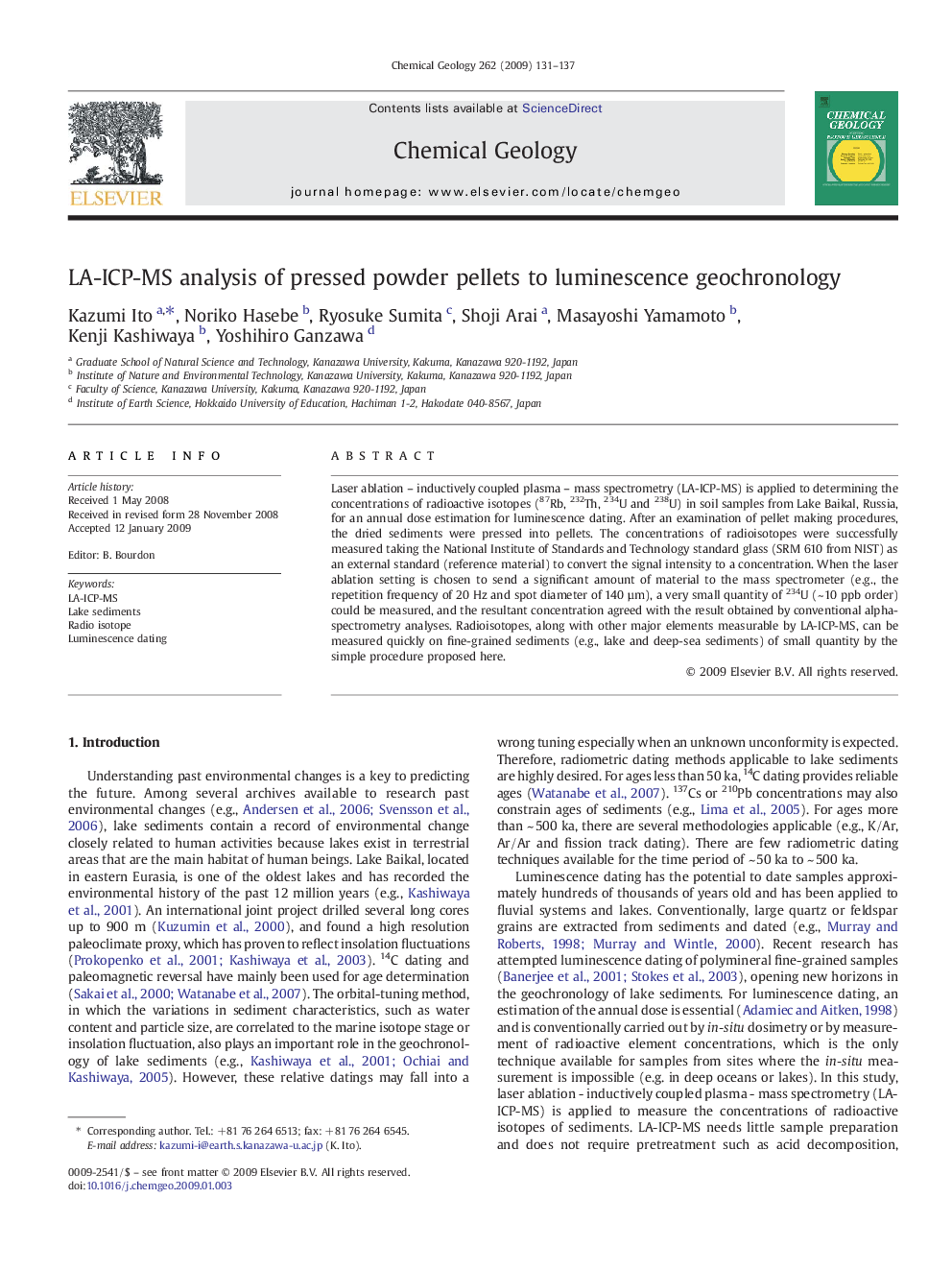| Article ID | Journal | Published Year | Pages | File Type |
|---|---|---|---|---|
| 4700355 | Chemical Geology | 2009 | 7 Pages |
Laser ablation – inductively coupled plasma – mass spectrometry (LA-ICP-MS) is applied to determining the concentrations of radioactive isotopes (87Rb, 232Th, 234U and 238U) in soil samples from Lake Baikal, Russia, for an annual dose estimation for luminescence dating. After an examination of pellet making procedures, the dried sediments were pressed into pellets. The concentrations of radioisotopes were successfully measured taking the National Institute of Standards and Technology standard glass (SRM 610 from NIST) as an external standard (reference material) to convert the signal intensity to a concentration. When the laser ablation setting is chosen to send a significant amount of material to the mass spectrometer (e.g., the repetition frequency of 20 Hz and spot diameter of 140 µm), a very small quantity of 234U (~ 10 ppb order) could be measured, and the resultant concentration agreed with the result obtained by conventional alpha-spectrometry analyses. Radioisotopes, along with other major elements measurable by LA-ICP-MS, can be measured quickly on fine-grained sediments (e.g., lake and deep-sea sediments) of small quantity by the simple procedure proposed here.
